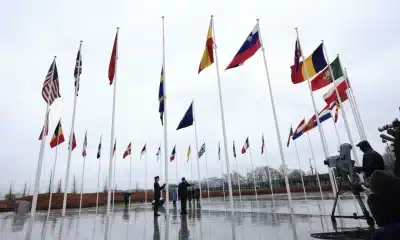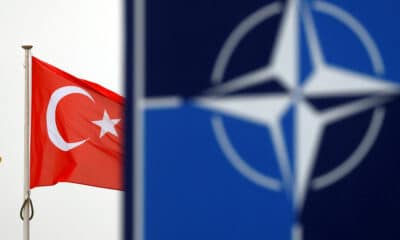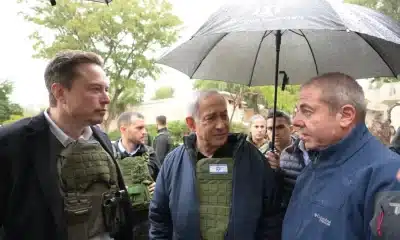World
Finland To Join NATO Tuesday, Military Alliance Chief Says
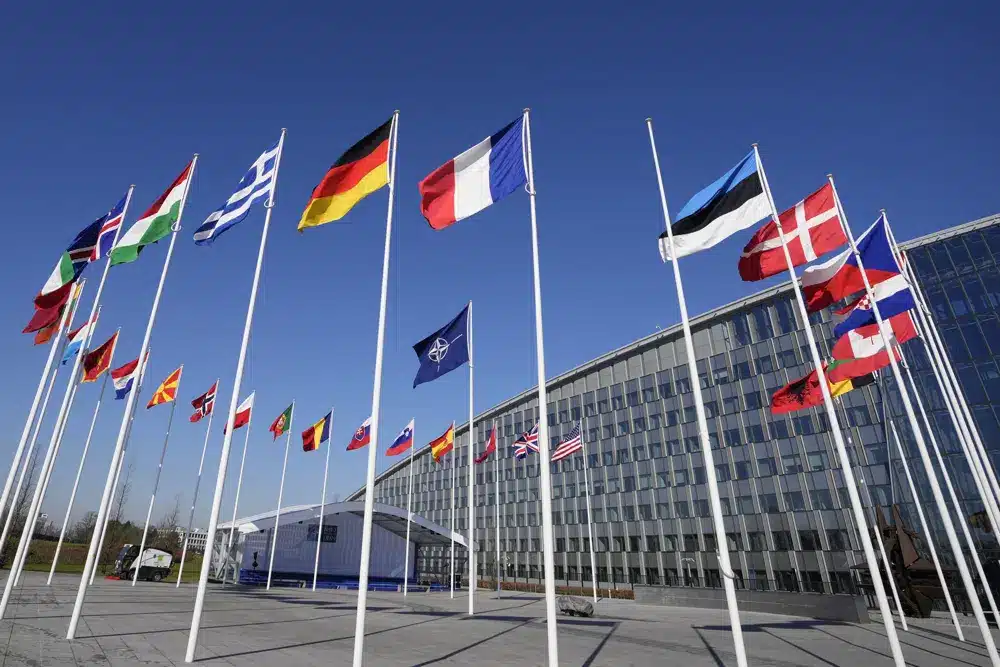
BRUSSELS — NATO Secretary-General Jens Stoltenberg said on Monday that Finland would join on Tuesday, making it the 31st member of the world’s biggest military alliance. This made Russia say that if NATO puts soldiers near their shared border, it will strengthen its own defenses.
“This is a historic week,” Stoltenberg told reporters on the eve of a NATO foreign ministers’ conference in Brussels. “Finland will be a full member of the alliance as of tomorrow,” he said, adding that he hopes Sweden will be able to join NATO in the coming months.
The former Norwegian prime minister said, “we will raise the Finnish flag for the first time here at NATO headquarters on Tuesday afternoon.” It will be a positive day for Finnish security, Nordic security, and NATO overall.”
Stoltenberg stated that Turkey, the last nation to ratify Finland’s membership, will hand over official texts to the United States. On Tuesday, Secretary of State Antony Blinken. Stoltenberg stated that he would then invite Finland to do the same.
Finland will be a full member of the alliance as of tomorrow.
Finnish President Sauli Niinistö, Defense Minister Antti Kaikkonen, and Foreign Minister Pekka Haavisto will attend the event.
“This is a watershed moment for us.” “The most important goal for Finland at the meeting will be to highlight NATO’s support for Ukraine as Russia continues its illegal aggression,” Haavisto said. “Our goal is to promote stability and security across the Euro-Atlantic region.”
Russia’s Deputy Foreign Minister, Alexander Grushko, stated that if Finland joins NATO, Moscow will strengthen its defenses.
“We will strengthen our military potential in the west and northwest,” Grushko said, according to the official news agency RIA Novosti. “If other NATO members’ forces are deployed on Finnish territory, we will take additional steps to ensure Russia’s military security.”
Finland’s admission comes just days after conservative parties received a boost in a weekend poll.
Finland’s admission comes just days after conservative parties received a boost in a weekend poll, depriving left-wing Prime Minister Sanna Marin of a second term. Marin had advocated for her country’s NATO membership.
Fearing for their safety after Russia invaded Ukraine a year ago, Finland and Sweden abandoned their traditional stances of military non-alignment to seek protection under NATO’s security umbrella.
All 30 allies endorsed the accession protocols of Finland and Sweden. Turkey and Hungary stalled the process for months, but Finland has yielded. Turkey has requested guarantees and assurances from both countries, particularly on combating extremism. Hungary’s requests need to be made clear.
For new members to join NATO, all members must concur unanimously. NATO officials are eager to draw Sweden into the fold before the United States. On July 11 and 12, President Joe Biden and his alliance counterparts will convene in Vilnius, Lithuania.
“Sweden is not alone.” Sweden is as near to becoming a full member as it can get,” Stoltenberg said.
SOURCE – (AP)
U.K News
UN Calls For Investigation Into Mass Graves Uncovered At Two Gaza Hospitals Raided By Israel
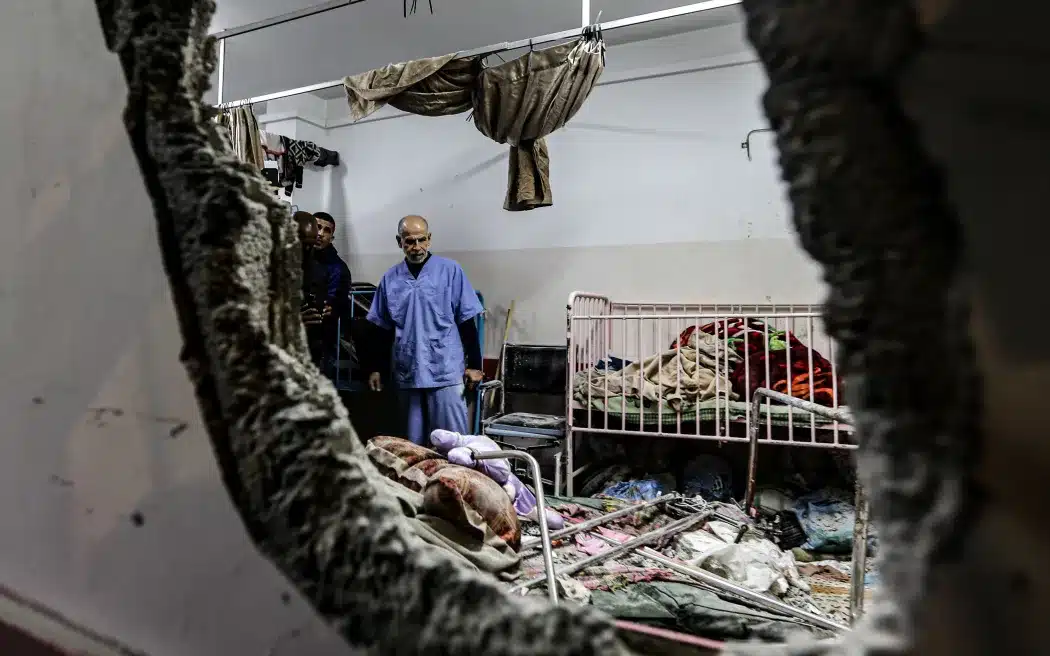
The United Nations (U.N.) Gaza The United Nations has urged for a thorough and reliable investigation into the mass graves discovered at two prominent hospitals in war-ravaged Gaza, which were seized by Israeli troops.
According to U.N. spokesman Stephane Dujarric, credible investigators must be granted access to the locations. Additionally, Dujarric emphasized the importance of ensuring the safety of journalists in Gaza so that they may accurately report on the facts.
AP – VOR News Image
UN Calls For Investigation Into Mass Graves Uncovered At Two Gaza Hospitals Raided By Israel
Volker Türk, the U.N. human rights chief, expressed his deep shock at the destruction of the Shifa medical complex in Gaza City and Nasser Hospital in Khan Younis. He also mentioned the disturbing finding of mass graves in and around these facilities after the departure of the Israeli forces.
The individual demanded impartial and open inquiries into the fatalities, emphasizing that “considering the current atmosphere of exemption from punishment, this should involve investigators from the international community.”
“Hospitals are afforded significant protection under international humanitarian law,” Türk stated. “The deliberate act of killing civilians, detainees, and individuals who are unable to participate in combat is considered a war crime.”
Vedant Patel, the spokesperson for the U.S. State Department, expressed deep concern over the accusations of mass graves at the hospitals and confirmed that U.S. officials have formally requested information from the Israeli government.
The Israeli military has excavated the bodies that Palestinians had previously buried as part of their efforts to locate the remains of hostages taken by Hamas during their attack on October 7th, which initiated the war. The soldiers conducted a thorough examination of the bodies in a dignified manner and promptly returned those that did not belong to Israeli hostages to their original location.
The Israeli military asserts that it eliminated or apprehended numerous militants who had sought refuge within the two hospital complexes, although these assertions could not be independently confirmed.

CNN – VOR News Image
UN Calls For Investigation Into Mass Graves Uncovered At Two Gaza Hospitals Raided By Israel
On Monday, the Palestinian civil defense in the Gaza Strip said that they had discovered 283 corpses in a makeshift cemetery located within the primary hospital in Khan Younis. This cemetery was established during the recent period of Israeli forces surrounding the hospital. According to the group, during that period, individuals could not inter the deceased in a designated burial ground and instead excavated graves within the hospital premises.
According to the civil defense, certain corpses were identified as individuals who were slain during the hospital siege. Additional casualties occurred as a result of the Israeli military’s incursion into the hospital.
The hospital strikes have decimated Gaza’s health sector, which is already struggling to handle the increasing casualties resulting from more than six months of warfare, according to Palestinian health officials.
The matter of who is eligible or responsible for an investigation remains uncertain.
Dujarric stated that for the United Nations to carry out an investigation, authorization from one of its main bodies is required.
“I believe it is not appropriate for anyone to make premature judgments about the outcomes or the individuals responsible,” he stated. “I believe that the investigation should have both access and credibility.”
Karim Khan, the head prosecutor of the International Criminal Court, emphasized the importance of investigating any offenses committed by Hamas terrorists and Israeli forces during his visit to Israel and the West Bank in December.
According to Dujarric, the unearthing of the graves serves as an additional justification for implementing a cease-fire, resolving the conflict, ensuring increased humanitarian access and the delivery of essential products, providing enhanced protection for hospitals, and securing the release of Israeli prisoners.

NDTV – VOR News Image
UN Calls For Investigation Into Mass Graves Uncovered At Two Gaza Hospitals Raided By Israel
The Hamas assault that initiated the conflict resulted in the deaths of over 1,200 individuals, predominantly non-combatants, and the abduction of roughly 250 captives. Israel reports that the terrorists currently have approximately 100 hostages and the remains of over 30 additional individuals in their possession.
Local health authorities report that over 34,000 Palestinians have died as a result of Israel’s military campaign in Gaza to eradicate Hamas. Approximately two-thirds of the casualties are comprised of children and women. The devastation of Gaza’s two major cities has resulted in a humanitarian crisis, causing almost 80% of the population in the area to seek refuge in other sections of the besieged coastal enclave.
SOURCE – (AP)
Election News
Modi Is Accused Of Using Hate Speech For Calling Muslims ‘Infiltrators’ At An Indian Election Rally
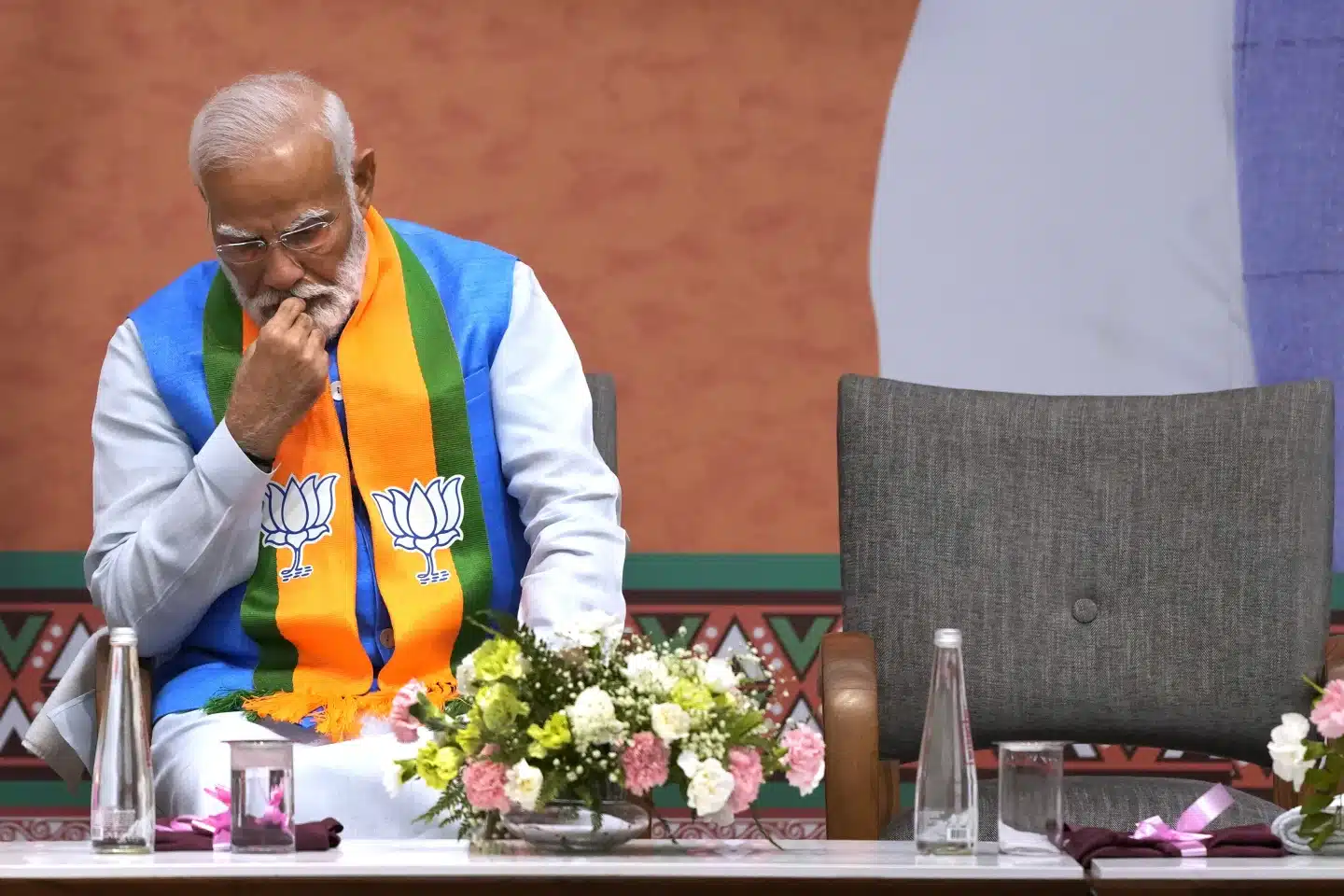
New Delhi – The principal opposition party in India has accused Prime Minister Narendra Modi of employing hate speech by referring to Muslims as “infiltrators,” which is considered to be one of his most inflammatory statements toward the religious minority. This comes only days after the commencement of the country’s lengthy general election.
The comments made at a political event on Sunday received strong condemnation, with some accusing Modi of promoting negative stereotypes about Muslims. The Congress party lodged a protest on Monday with the Election Commission of India, accusing him of violating regulations that prohibit candidates from participating in any action that exacerbates religious tensions.

Britannica – VOR News Image
Modi Is Accused Of Using Hate Speech For Calling Muslims ‘Infiltrators’ At An Indian Election Rally
Detractors of the prime minister, who openly identifies as a Hindu nationalist, argue that India’s longstanding values of diversity and secularism have been threatened since his Bharatiya Janata Party came into office ten years ago. The party is accused of promoting religious intolerance and occasionally even inciting violence. The party refutes the claim and asserts that its policies are advantageous to all citizens of India.
During a rally in Rajasthan, Modi asserted that while the Congress party held power, they claimed that Muslims had the primary entitlement to the nation’s resources.” Should the party regain power, it would collect all of your riches and redistribute it among individuals who have a greater number of children,” he stated, eliciting applause from the audience.
“They will allocate it to individuals who have infiltrated,” he said, questioning, “Do you believe that your diligently earned funds should be bestowed upon infiltrators?”
Mallikarjun Kharge, the president of the Congress party, characterized the prime minister’s remarks as “hate speech,” while party spokesperson Abhishek Manu Singhvi deemed them “profoundly objectionable.”
The party requested intervention from the electoral commission, which has a rule of conduct that prohibits candidates from making appeals based on caste or sectarian sentiments in order to obtain votes. The six-week election’s preliminary voting took place on Friday, and most polls indicate that Modi and his Hindu nationalist BJP will win. The results will be released on June 4th.

CDN – VOR News Image
Modi Is Accused Of Using Hate Speech For Calling Muslims ‘Infiltrators’ At An Indian Election Rally
Asaduddin Owaidi, a Muslim legislator and leader of the All India Majlis-e-Ittehad-ul-Muslimeen party, stated on Sunday that Prime Minister Modi has consistently targeted and insulted Muslims for political gain since 2002.
Rights groups argue that under Modi’s leadership, attacks against minorities in India, particularly Muslims, have gotten increasingly audacious, exacerbating the existing tensions between the Hindu majority and the Muslim community.
Hindu mobs have carried out acts of lynching against Muslims based on accusations of consuming beef or engaging in cow smuggling, an activity that is considered sacred by Hindus. Muslim businesses have faced economic boycotts, their houses and establishments have been demolished, and their places of worship have been intentionally set ablaze. There have been explicit calls for the extermination of their whole population.
Modi’s comments alluded to a statement made in 2006 by the former Prime Minister Manmohan Singh of the Congress party. Singh asserted that it is imperative for India’s lower castes, tribes, women, and specifically the Muslim minority, to have an equitable role in the nation’s progress.
Singh asserted that they should be given priority access to resources. Twenty-four hours later, his office provided clarification that Singh’s statement encompassed all marginalized demographics.
The Congress party, in its plea to the electoral commission, alleged that Modi and the BJP had consistently used religion and religious symbols and sentiments in their election campaign without facing any consequences. “The commission’s failure to penalize the prime minister and the BJP for their clear violations of electoral laws has further strengthened these actions,” the statement stated.
“Modi has diminished the prestige of his position more than any other prime minister in the history of India,” stated Kharge, the head of the Congress party, on the social networking platform X.
The panel has the authority to issue warnings and temporarily suspend candidates for infractions of the code of conduct.
“We refuse to provide a statement,” a representative for the commission informed the Press Trust of India news agency on Monday.
During his speech, Modi reiterated a Hindu nationalist narrative that suggests Muslims are surpassing the Hindu population through higher birth rates. The Hindu population in India constitutes 80% of the total population of 1.4 billion, whereas the Muslim population, at 200 million, accounts for 14%. According to official statistics, the fertility rates of Muslims have experienced the most significant decline compared to other religious groups in recent decades. The rate has decreased from 4.4 in 1992-93 to 2.3 between 2019–21, which is slightly higher than the fertility rate of Hindus at 1.94.
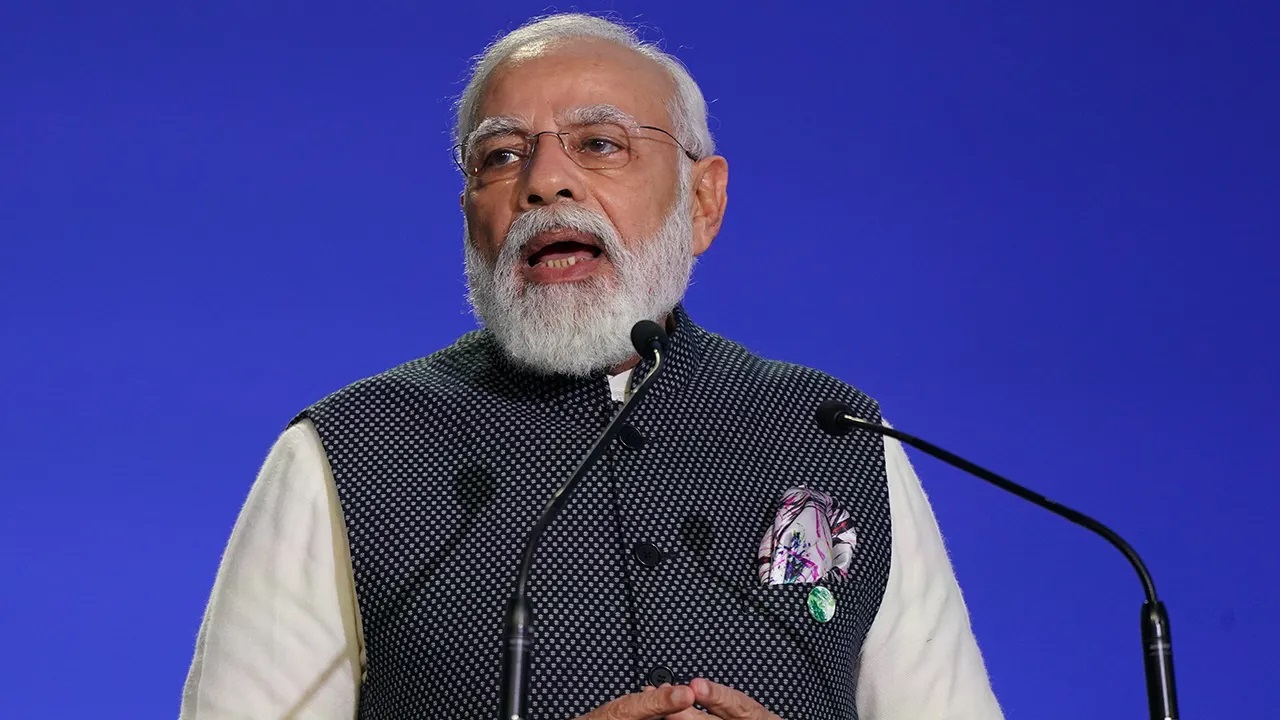
Fox – VOR News Image
Modi Is Accused Of Using Hate Speech For Calling Muslims ‘Infiltrators’ At An Indian Election Rally
The Bharatiya Janata Party (BJP) led by Modi has previously labeled Muslims as infiltrators and portrayed them as undocumented immigrants who entered India from Bangladesh and Pakistan. Several states governed by the Bharatiya Janata Party (BJP) have enacted legislation that imposes limitations on interfaith marriage, citing the unsubstantiated conspiracy theory of “love jihad,” which alleges that Muslim males exploit marriage as a means to convert Hindu women.
Throughout the entire period, Modi has predominantly refrained from speaking out, which opponents argue has encouraged a faction of his most radical followers and facilitated an increase in hate speech targeting Muslims.
SOURCE – (AP)
World
A Russian strike on Kharkiv’s TV tower is part of an intimidation campaign, Ukraine’s Zelenskyy says
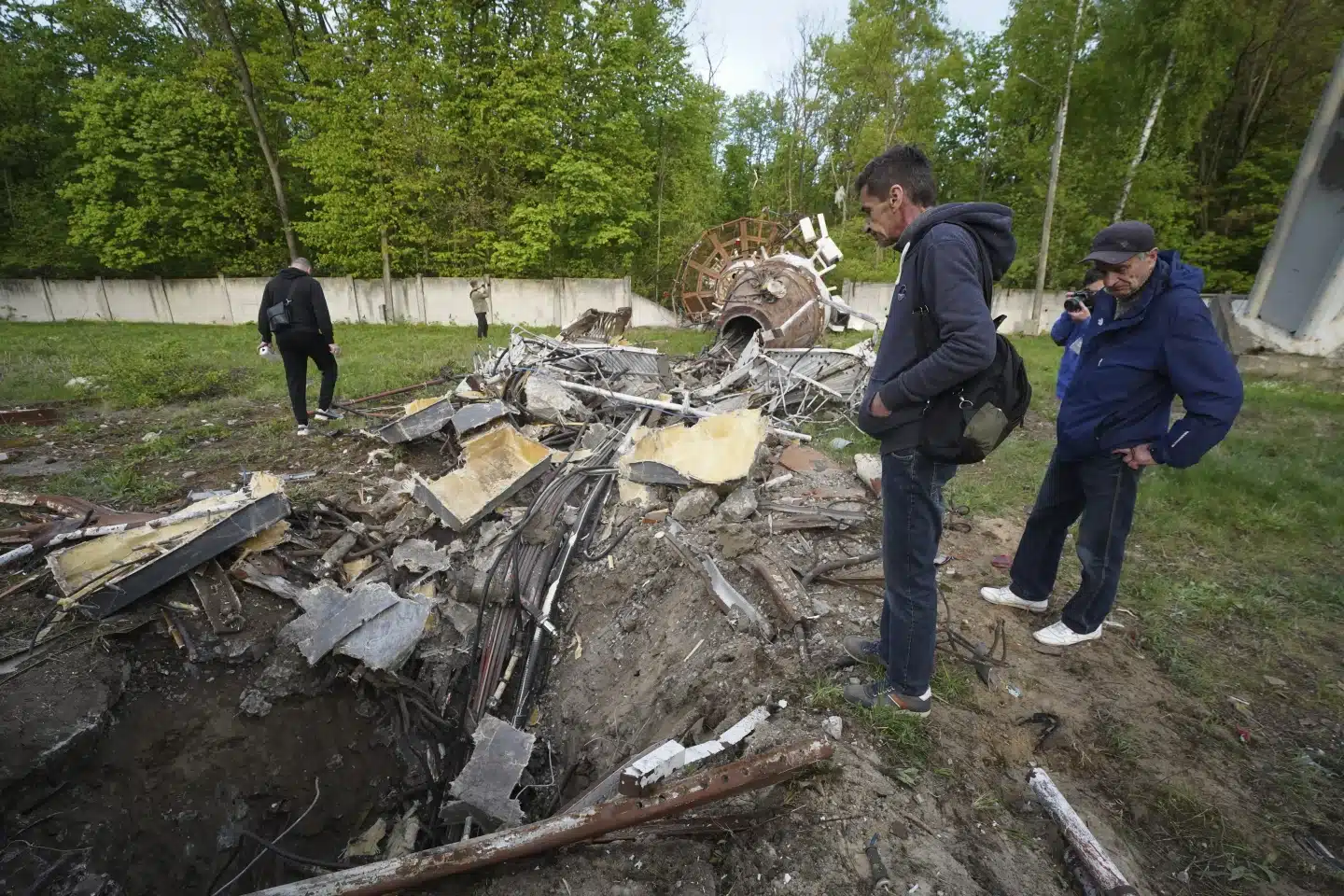
Kiev, Ukraine — Ukrainian President Volodymyr Zelenskyy said a Russian missile assault that damaged a prominent skyline television tower in Kharkiv was part of the Kremlin’s effort to terrorize Ukraine’s second-largest city, which has been targeted more frequently in recent weeks.
The strike aimed to “make the terror visible to the whole city and to try to limit Kharkiv’s connection and access to information,” Zelenskyy stated in a Monday evening address.
AP – VOR News Image
A Russian strike on Kharkiv’s TV tower is part of an intimidation campaign, Ukraine’s Zelenskyy says
The northeastern Kharkiv region borders the roughly 1,000-kilometer (600-mile) front line where Ukrainian and Russian forces have been fighting for more than two years, following Moscow’s full-scale invasion of Ukraine. During an attrition war, the front line has remained relatively static, focusing primarily on artillery, drones, and trenches.
Since late March, Russia has increased pressure on Kharkiv, ostensibly to exploit Ukraine’s lack of air defense systems. It has battered the local power grid and struck apartment buildings.
On Monday, a Russian Kh-59 missile damaged Kharkiv’s 250-meter (820-foot) TV tower, severing it approximately in half and halting transmissions.
According to a Washington think group, Russia may consider launching a ground assault against Kharkiv.
“The Kremlin is conducting a concerted air and information operation to destroy Kharkiv City, convince Ukrainians to flee, and internally displace millions of Ukrainians ahead of a possible future Russian offensive operation against the city or elsewhere in Ukraine,” according to the Institute for the Study of War, which released an assessment of the situation.
The projected arrival in Ukraine of new military supplies from Western partners in the coming weeks may have spurred Russia to accelerate its attacks before the equipment arrives, the ISW said, adding that capturing Kharkiv would be “a significant challenge” for the Kremlin’s soldiers.
Instead, the Russian military command “may attempt to destroy Kharkiv City with air, missile, and drone strikes, prompting a large-scale internal displacement of Ukrainian civilians,” it stated.
The United States Senate returned to Washington on Tuesday to vote on $61 billion in war aid to Ukraine, following months of delays. Zelensky said US President Joe Biden informed him that the aid will include long-range and artillery capabilities.
“Four priorities are key: defense of the sky, modern artillery, long-range capacity, and to ensure that packages of American aid arrive as soon as possible,” he stated.
Also on Tuesday, Britain offered 500 million pounds ($620 million, 580 million euros) in fresh military supplies for Ukraine, including 400 vehicles, 60 boats, 1,600 missiles, and 4 million rounds of ammunition.
The shipment will also include British Storm Shadow long-range missiles, which have a range of around 150 miles (240 kilometers) and have been effective against Russian targets, according to the British government.
AP – VOR News Image
A Russian strike on Kharkiv’s TV tower is part of an intimidation campaign, Ukraine’s Zelenskyy says
British Prime Minister Rishi Sunak called Zelenskyy on Tuesday morning to confirm the additional aid. He made the announcement during a visit to Warsaw later that day, where he met with Polish Prime Minister Donald Tusk and NATO Secretary General Jens Stoltenberg.
However, the European Union delivered less positive news. EU countries with Patriot air defense systems provided no clear indication Monday that they would be willing to send them to Ukraine, which sorely needs at least seven of the missile batteries.
Ukraine’s army is also outnumbered in the conflict, and increasing the country’s mobilization has been a tricky matter.
Ukrainian Foreign Minister Dmytro Kuleba warned on Tuesday that authorities intend to crack down on young men of conscription age who have relocated abroad, with detailed measures to be announced soon.
“Staying abroad does not relieve a citizen of his or her duties to the homeland,” Kuleba said on the social networking platform X.
Meanwhile, Russia launched 16 Shahed drones and two Iskander-M ballistic missiles over Ukraine’s southern and central areas, the Ukrainian air force reported Tuesday morning. It stated that all but one of the drones were intercepted.
AP – VOR News Image
A Russian strike on Kharkiv’s TV tower is part of an intimidation campaign, Ukraine’s Zelenskyy says
An nighttime attack in Odesa injured nine persons, according to Regional Governor Oleh Kiper. According to Kiper, the injured included two newborns and two children aged nine and twelve. Hennadii Trukhanov, the city mayor, reported that 58 flats in 22 buildings were destroyed.
Among other developments:
A Russian missile strike near Dnipro, Ukraine’s fourth-largest city, injured four people and sent them to the hospital, according to regional governor Serhii Lysak.
Russian forces launched a guided aerial bomb in Kostiantynivka, a city in the eastern Donetsk area, injuring five people riding in a car, according to authorities. Both of them were in critical condition.
SOURCE – (AP)
-
Business5 months ago
Google Will Start Deleting ‘Inactive’ Accounts In December. Here’s What You Need To Know
-
Entertainment5 months ago
Merriam-Webster’s 2023 Word Of The Year Is ‘Authentic’
-
Sports5 months ago
Panthers Fire Frank Reich In His First Season With Team Off To NFL-Worst 1-10 Record
-
Celebrity5 months ago
Elon Musk Visits Destroyed Kibbutz and Meets Netanyahu in Wake of Antisemitic Post
-
Celebrity5 months ago
Shane MacGowan, Lead Singer Of The Pogues And A Laureate Of Booze And Beauty, Dies At Age 65
-
Entertainment5 months ago
Robert Downey Jr. Won’t Be Returning To The Marvel Cinematic Universe As Tony Stark





